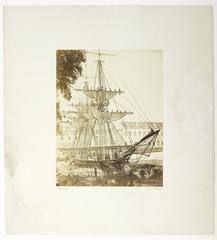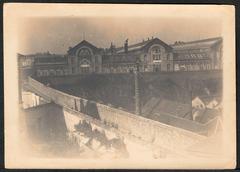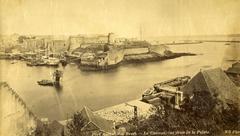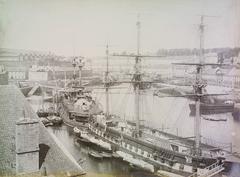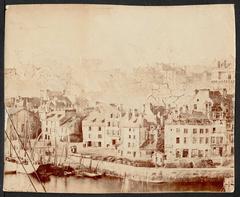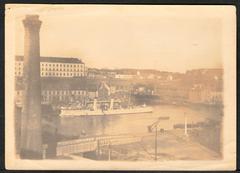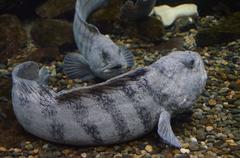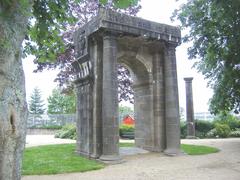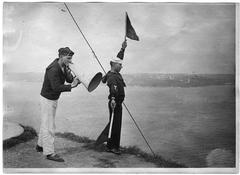
Visiting École des Mousses Brest, France: Guide, Tickets, Hours, and Attractions
Date: 15/06/2025
Introduction
The École des Mousses in Brest is a pillar of French naval heritage, combining over two centuries of tradition with modern military training. Founded in the 19th century, it has shaped generations of sailors through rigorous academic, maritime, and physical instruction. Although public access is limited due to its status as an active military institution, special events and open days offer rare glimpses into its storied grounds and vibrant culture.
This detailed guide covers the school’s history, cultural significance, visitor information—including tickets and hours—and highlights nearby attractions in Brest. Whether you’re a history enthusiast, a family seeking educational experiences, or a traveler keen to explore French maritime legacy, this resource equips you to make the most of a visit to Brest and its remarkable naval school.
Table of Contents
- The École des Mousses: Overview and Significance
- Historical Timeline: Foundations to Modern Revival
- Role in French Naval Heritage
- Training and Student Life
- Visiting the École des Mousses: Practical Information
- Nearby Attractions in Brest
- FAQs
- Tips for an Enjoyable Visit
- Conclusion and Call to Action
- References and Further Reading
The École des Mousses: Overview and Significance
Located in Brest, Brittany’s historic naval city, the École des Mousses is a unique institution dedicated to preparing young men and women (ages 16–18) for careers in the French Navy. Established by royal ordinance in 1822 and formally founded in 1856, it has been instrumental in shaping the values and skills of France’s maritime defenders. The school stands as a living monument to the nation’s seafaring past and ongoing commitment to naval excellence (Wikipedia; Wiki-Brest).
Historical Timeline: Foundations to Modern Revival
Early Foundations (1822–1856)
- 1822: King Louis XVIII issues a royal ordinance allowing boys aged 12–14, often sons of sailors or orphans, to join the Navy under strict conditions (Wikipedia).
- 1832: The first official company of mousses is established in Brest, housed at La Cayenne barracks (Wiki-Brest).
Official Creation and Expansion (1856–Early 20th Century)
- 1856: The École des Mousses is formally created, with training centralized aboard the frigate Thétis (Amicale Pupilles Mousses).
- 1861–1919: The school expands to several ships and later transitions to shore-based facilities, modernizing its curriculum and facilities (Wiki-Brest; INA Ouest en Mémoire).
Wartime Service and Sacrifice
- World Wars I & II: Many mousses serve in combat, with some losing their lives. The school is forced to relocate during WWII due to German occupation (Amicale Pupilles Mousses).
Postwar Period and Closure (1945–1988)
- Post-1945: The school trains thousands at temporary sites before returning to Brest in 1960. It adapts training to modern naval needs (Wiki-Brest).
- 1988: Changing recruitment needs lead to its closure after 132 years (Wiki-Brest).
Modern Revival (2009–Present)
- 2009: The École des Mousses is revived at Brest’s Centre d’Instruction Naval, welcoming both boys and girls and reflecting contemporary values of diversity and inclusion (BoatNews; La Marine Recrute).
Role in French Naval Heritage
The École des Mousses is more than an educational facility; it is a living symbol of French naval tradition. Its alumni have played key roles in both war and peace, and the school’s flag is adorned with honors such as the Croix de la Légion d’Honneur and Croix de Guerre (Wikipedia). The curriculum has evolved to incorporate advances in technology and changes in military doctrine, ensuring that students are prepared for the challenges of modern naval service (INA Ouest en Mémoire).
Training and Student Life
Life at the École des Mousses is characterized by discipline, teamwork, and comprehensive training. The ten-month program includes:
- Academic Courses: Mathematics, languages, and sciences.
- Maritime Training: Seamanship, navigation, first aid, and survival skills.
- Physical Fitness: Daily drills, endurance training, and the demanding “commando stage” (Franceinfo).
- Leadership and Character Development: Focused on resilience, responsibility, and camaraderie (France 3 Régions).
- Diversity: Since 2009, the school has admitted female students, reflecting the Navy’s commitment to inclusion (Le Télégramme).
Not all candidates complete the course, as the standards are intentionally rigorous to prepare students for future navy roles.
Visiting the École des Mousses: Practical Information
Location and Accessibility
- Address: Centre d’Instruction Naval (CIN), Brest, Brittany, France.
- Getting There: Brest is accessible by train, car, and regional flights. From the city center, public buses and trams connect to the naval base area. Taxis are available, but parking is limited during events.
Visiting Hours and Tickets
- Regular Access: The École des Mousses is an active military academy and does not offer regular public access.
- Special Events: The main opportunity to visit is during the annual “Journée Portes Ouvertes” (Open Day), Bastille Day, or heritage festivals. Event dates are announced in advance on the Ministère des Armées website and Brest Tourism.
- Tickets: Open days are usually free but require advance registration due to security (Eventbrite).
- Identification: All visitors must present valid ID and comply with security checks.
Guided Tours and Events
- Open Day Tours: Include guided visits to classrooms, training grounds, and exhibitions of naval artifacts. Demonstrations of seamanship, drills, and ceremonies are highlights.
- Public Ceremonies: Watch the mousses march in the Bastille Day parade or participate in maritime festivals where the school’s traditions are on display.
- Group Visits: Schools and official groups may request educational tours, subject to approval (Ministère des Armées).
Security and Accessibility
- Security: Stringent protocols; photography may be restricted in certain areas.
- Accessibility: Most public areas are accessible during open days, but visitors with disabilities should contact organizers in advance to confirm accommodations.
Nearby Attractions in Brest
Enhance your visit to the École des Mousses with these renowned Brest attractions:
- Musée National de la Marine: Explore France’s naval history through interactive exhibits (Musée National de la Marine).
- Château de Brest: Medieval fortress housing the maritime museum.
- Océanopolis Aquarium: A leading ocean discovery park.
- Tour Tanguy Museum: Offers local history and panoramic city views.
- Brest Historic Port: Lively harbor with historic vessels and waterfront cafes.
- Crozon Peninsula: Scenic coastal trails and natural landscapes.
FAQs
Q: Can I visit the École des Mousses at any time?
A: No, visits are only allowed during the annual Open Day or special national events. Regular public access is restricted.
Q: Are there entrance fees?
A: Open day events are generally free but require advance registration.
Q: Is the campus accessible to visitors with disabilities?
A: Yes, most areas are accessible during public events. Contact organizers for specific needs.
Q: Can I take photos inside?
A: Photography is restricted in certain areas. Please follow staff instructions.
Q: Is the school co-educational?
A: Yes; since 2009, both male and female students are admitted.
Tips for an Enjoyable Visit
- Monitor Official Announcements: Check the French Navy and Brest Tourism websites for event dates.
- Register Early: Open day tickets are limited.
- Bring Valid ID: Required for entry.
- Use Public Transport: Parking can be restricted during events.
- Respect Military Protocol: Dress modestly and follow instructions.
- Enhance Your Experience: Download the Audiala app for audio guides and interactive maps of Brest’s maritime sites.
Conclusion and Call to Action
Although the École des Mousses is not open for daily tourist visits, its presence infuses Brest with a vibrant sense of naval pride and tradition. By attending special events or open days, you can glimpse the rigorous training, rich heritage, and strong camaraderie that define this institution. Pair your visit with Brest’s other maritime attractions for a comprehensive journey into French naval history.
Stay informed about upcoming events through official channels, download the Audiala app for curated heritage tours, and explore Brest’s rich maritime stories both in person and virtually.
References and Further Reading
- École des Mousses – Wikipedia
- Wiki-Brest – École des Mousses
- Amicale Pupilles Mousses
- The Mousses School Trains the Future Sailors of the French Navy – BoatNews
- La Marine Recrute
- Ministère des Armées – Open Day at École des Mousses
- INA Ouest en Mémoire
- Franceinfo – L’École des mousses, une école de la maturité
- France 3 Régions
- Le Télégramme
- Official Brest Tourism Website
- École des Mousses – Defense Ministry
- Musée National de la Marine – Brest
- Fondation Belem
